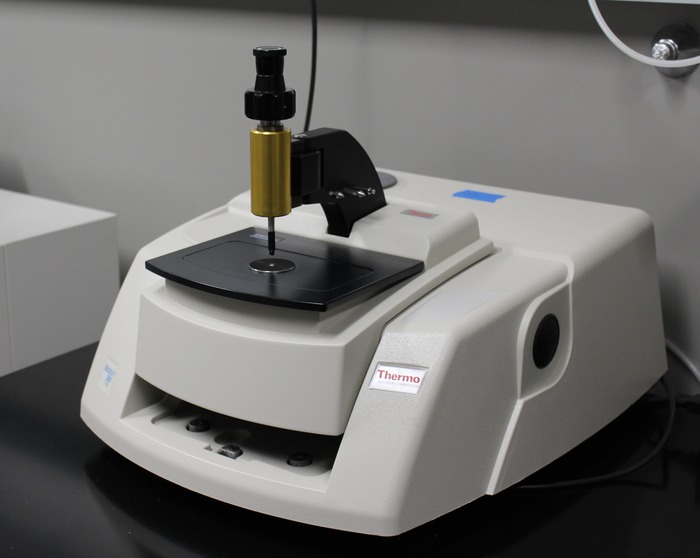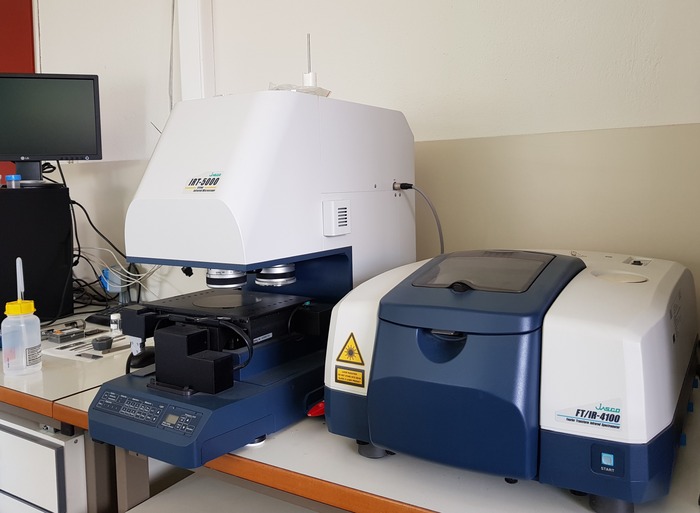FTIR spectroscopy, or Fourier Transform Infrared spectroscopy, is a scientific tool used in various fields to analyze and identify materials. It works by shining infrared light on a sample and measuring how much of that light is absorbed at different frequencies. This absorption pattern provides valuable information about the sample’s composition.
In uncovering detailed molecular information using infrared analysis, the equipment used is very important and must be high-quality like Agilent FTIR spectroscopy instruments. In this article, you will learn more about FTIR Spectroscopy, helping you understand its complexities as a beginner.
Principles of FTIR Spectroscopy
To understand FTIR spectroscopy, let’s break down its basic principles.
Basic Concepts
Infrared radiation is a type of light that our eyes can’t see. When this invisible light interacts with a substance, the molecules inside it start to vibrate. Here’s the key: FTIR (Fourier Transform Infrared) spectroscopy uses these vibrations to give us valuable information about what the substance is made of at a molecular level.
Instrumentation
An FTIR spectrometer is the device we use for this process. It’s like a high-tech detective that helps us understand molecules. The spectrometer has vital parts: an interferometer, a source that emits infrared light, and a detector.
- Interferometer: An Interferometer is like a magnifying glass. It takes the infrared signal and transforms it into something we can use – a spectrum that reveals the molecular details.
- Source: The source is the flashlight. It emits infrared light, the kind we can’t see, that interacts with the substance.
- Detector: The evidence collector is the detector. It picks up the signals that result from the interactions between the infrared light and the substance’s molecules.
How an FTIR Spectrometer Operates
Learn the basic step-by-step operation of an FTIR spectrometer.
Step-by-Step Operation
- Sample Illumination: Infrared light shines on the sample, making its molecules vibrate – a molecular spotlight.
- Interference: The interferometer splits the light into two beams, creating a duo of molecular observers.
- Reflection and Rejoining: One beam reflects off a mirror, the other continues, and they reunite, creating an interference pattern – a molecular dance.
- Fourier Transform: The interference pattern undergoes a Fourier transform, turning the dance into a spectrum – a detailed chart of molecular vibrations.
Spectral Range and Resolution
FTIR covers a range of infrared wavelengths, allowing scientists to study different molecular vibrations. Spectral resolution is crucial for distinguishing fine details in the spectrum.
Common Sampling Techniques in FTIR Spectroscopy
Sampling involves obtaining a representative portion of a substance for analysis. This step significantly influences the accuracy of FTIR results.
Reflection Techniques
- Attenuated Total Reflection (ATR): A method tailored for direct analysis, particularly beneficial for solids and liquids. Think of it as shining a light directly onto the sample, making it easier to understand what’s happening in solids and liquids at a molecular level.
- Specular Reflection: Perfect for surface analysis, where light reflects off the sample at a specific angle. Imagine looking at a mirror and noticing how the light reflects – this technique does the same but on a molecular scale.
Transmission Techniques
- Transmission Methods: Involves passing light through the sample. It’s like sending light through a substance to see how it behaves. This technique is versatile, adapting to different sample types like liquids, gases, and solids.
- Analysis of Liquids, Gases, and Solids: Here, the focus is on tailoring techniques for each sample type. It’s like having different tools for different jobs – liquids, gases, and solids each get their specialized approach.
Diffuse Reflectance
This technique utilizes diffuse reflection for analyzing powdered samples. Imagine looking at a surface and noticing how light scatters – this technique capitalizes on that scattered light to understand powdered samples.
Particularly useful in material characterization, especially when dealing with powders. It’s like using a specialized tool for a specific kind of material – in this case, powders.
Applications of FTIR Spectroscopy
FTIR finds applications in various scientific domains.
Chemistry and Materials Science
Chemical Analysis
FTIR is a chemical detective, helping scientists identify and characterize chemicals based on their unique molecular fingerprints. This capability is instrumental in understanding the composition of diverse substances.
Material Identification
In materials science, FTIR is like a molecular magnifying glass, enabling the study of a material’s composition at a microscopic level. It’s particularly useful for determining what makes up various materials, from polymers to ceramics.
Biology and Pharmaceutical Analysis
Biological Molecules
When it comes to biology, FTIR becomes a molecular biologist, offering insights into the structure of biological molecules. This includes understanding the molecular composition of proteins, nucleic acids, and other essential biomolecules.
Pharmaceutical Quality Control
In the pharmaceutical realm, FTIR plays a critical role in ensuring the quality of products. By analyzing pharmaceutical samples, FTIR helps detect impurities, assess the consistency of formulations, and maintain the overall quality of drugs.
Environmental Monitoring
Air and Water Quality
FTIR serves as a guardian of our environment, aiding in the monitoring of air and water quality. It’s not just about identifying pollutants but also understanding their concentrations, providing valuable data for assessing environmental health.
Detection of Environmental Issues
Beyond identification, FTIR contributes essential data for addressing broader environmental concerns. This includes studying the impact of human activities on ecosystems, tracking emerging contaminants, and contributing to the development of effective environmental policies.
Exploring the Unseen with FTIR Spectroscopy
FTIR spectroscopy is a versatile tool with applications spanning various scientific disciplines. From understanding its principles and operation to exploring real-world applications, this guide provides a solid foundation for beginners.
As technology continues to advance, FTIR spectroscopy holds promise for even more accurate and diverse analyses in the future.


